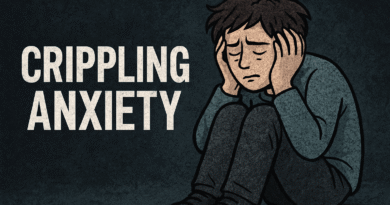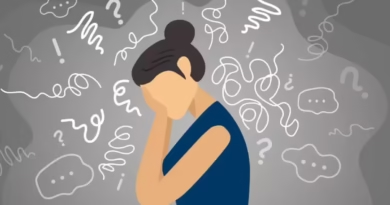Understanding Dissociative Disorder: How Ambien and Xanax Impact the Mind
Understanding Dissociative Disorder: How Ambien and Xanax Impact the Mind
Once upon a time, when the face started back at me, it felt strange. I looked at the mirror, and my reflection seemed like a stranger; my emotions and my thoughts felt unfeeling. I was not sad, but joy felt distant. I was somewhere in between. That when I first heard the words Dissociative Disorder Ambien and Xanax they are part of my therapy.
The connection between Dissociative Disorder Ambien and Xanax can be complex and challenging to navigate.
At first, I misunderstood dissociation as simply losing focus or unfeeling for a moment, but I soon realized it was much more difficult; it’s more like the safety exit when the emotional pain becomes too much. Dissociative Disorder, Ambien, and Xanax. I uncovered a hidden connection between anxiety, trauma, and the unmanageable endless cycle of sleeplessness that is the silence.
Understanding Dissociative Disorder Ambien and Xanax are crucial for effective treatment.
Understanding Dissociative Disorder
Dissociative disorder is not more forgetfulness; it’s the defense the mind quietly revolts against pain. When your brain can not handle emotional or physical trauma, the brain divides off memory, identity, or perception to help you withstand the pain.
The disorder comes in different ways
- Memory loss, where you can not recall major life events.
- Self- detachment\Derealization Disorder, where you feel unfeeling from yourself and the world.
- Divided Identity Disorder (DID), where two or more roles may take control at different times.
The first time I struggled with it, confusion took over. It was like watching my life like a movie I could see but no longer touch. That sense of disconnection gave me short comfort, but it removed pieces of me. There is where understanding the connection between Dissociative Disorder, Ambien, and Xanax becomes a matter.
It’s important to recognize how Dissociative Disorder Ambien and Xanax influence the healing journey.
Side Effects of Dissociative Disorder
Dissociative disorder impacts a person throughts, memories, emotions, and perception of reality and the world. The disorder affects deep feelings, relationships, and even physical feelings. Each type of dissociative disorder comes with distinct difficulties and side effects.
- Memory loss
- Distorted sense of reality
- Anxiety, tiredness
- Suicidal thoughts
- Stress
- Emotional numbness
Understanding the Emotions Behind Dissociation
Many people who struggle with detachment carry a history of emotional pain and trauma, lack of care, or severe mental stress. For me it came from living just to survive, not to heal. The mind, in its attempt to protect, builds emotional walls. Over time, those same walls stop guarding; they start to close, cutting you off from what you feel and who you are.
Isolation has its own repeat; it grows into anxiety, insomnia, and quiet sadness. You can not fall asleep, unable to quiet your thoughts and awareness. It’s during those endless, restless nights that things like Ambien and Xanax come to enter the story.
Xanax: The Search for Calm
Dissociative Disorder Ambien and Xanax are often interconnected in treatment plans.
Xanax is commonly prescribed to remove anxiety and panic attacks. It works by enhancing GABA—a brain chemical that reduces brain activity and promotes relaxation and emotional ability.
In times of Dissociative Disorder, Ambien and Xanax regularly quiet Xanax; they provide temporary relief. I regain sitting, resting there, trying to recover from another division of my heartbeats after another lesson of dissociation. A medication signal would slow overthinking ground for the moment.
Many patients find that Dissociative Disorder Ambien and Xanax play significant roles in their recovery.
But the calm came at a price. The more I learned about Xanax, the more my mind started to believe that piece lived self-regulated. And for someone struggling and unclear of who they are, that trick can be dangerous.
Ambien: The Promise of Rest
Ambien is a medication doctors commonly prescribe for short-term insomnia. When you are lying awake at night every night, your mind replaying painful memories or anxious thoughts, it can feel like that is the only thing that truly helps you rest.
For someone living with dissociation, anxiety, and sleeplessness, rest feels like a cold dream. Ambien, the fast noise, slows the mind until the sleep finally comes; for me it becomes more than remedy it was a leave of nights from the weight of reality.
The first time I took Ambien, I did not simple fall asleep. I fell away from everything that ached inside me. It offered relief, but only Ambien can soften the line between dreams and waking life sometimes, making the sense of disconnection strong.
The Hidden Connection Between Dissociative Disorder, Ambien, and Xanax
By exploring Dissociative Disorder Ambien and Xanax, we can learn more about mental health strategies.
So that the connection between all of it, trauma
Dissociative disorders are born from unsolved trauma. Medications like Ambien and Xanax are used to manage the side effects like sleeplessness and anxiety; they all come from the trauma. That blur between worlds was the same silent distance I know and feel very well.
The relationship between Dissociative Disorder Ambien and Xanax is essential for understanding treatment options.
But true healing takes more than a prescription. It’s all about slowly rebuilding your sense of self—the part that does not need to detach to protect yourself.
To understand the Dissociative Disorder, Ambien, and Xanax is to see their role in the control of the mind, the silent protector.
To cope with challenges, recognizing Dissociative Disorder Ambien and Xanax can be beneficial.
- Ambien gives temporary rest
- Xanax quiets inner storms.
- Dissociative as the mind controller
But none of them touch the original surface; the unhealed pain that causes their mind to split from the body stays in the tense.
My Story of Fading Between Worlds
There were mornings after taking Ambien when I woke up feeling like a piece of my life had quite removed parts of me. I scroll through my phone and find messages. I did not remember sending it. Once I nearly fell asleep with the stove still on.
Some days after gripping the Xanax. I did feel emotionally unfeeling not happy, not sad, just simply disconnected. I used to believe that silence means healing, but it just avoids.
Living with Dissociative Disorder, Ambien, and Xanax helped me understand something I will never forget: medication can support your recovery, but I can remove it. Healing starts when you start facing the pain you once avoided
Ultimately, Dissociative Disorder Ambien and Xanax can either aid or complicate the healing process.
Why Mindful Use Matters
Ambien and Xanax are powerful, but their misuse can cause dissociation. Lasting use can lead to addiction, memory loss, and emotional dullness. That’s why doctors suggest them as short-term medication, not lifelong partners.
If you are managing Dissociative Disorder, Ambien, and Xanax, it’s good to follow these steps:
Take medication only as prescribed. Never increase doses without consulting your doctor.
Know your symptoms. Keep a record of how you feel before and after taking medication.
Practice daily exercises. It helps reduce dissociation in a natural way
Integrate therapy. Medications treat the side effects; therapy heals the roots.
Prioritize self-love. Do not shame yourself for needing help. Healing takes time.
Finding Your Way Back to Yourself
Dissociative Disorder, Ambien, and Xanax tell a story of avoidance and powerful parts of the healing process. Dissociation hides the pain Ambien helps to take rest, and Xanax removes the fear, but the true recovery starts when you stop running from fear, from emotions, from pain, and from yourself and rebuild yourself again with healing one layer at a time.
Addressing Dissociative Disorder Ambien and Xanax is vital for a comprehensive healing journey.
If I could speak to my younger self anything, it would be this Healing does not start with forgetting your pain; it’s all about understanding it, carrying it gently, and making peace with your past.
That what recovery from Dissociative Disorder, Ambien, and Xanax really looks like: less about escaping reality and more about learning to live fully with it
In summary, Dissociative Disorder Ambien and Xanax illustrate the balance between medication and self-discovery.




